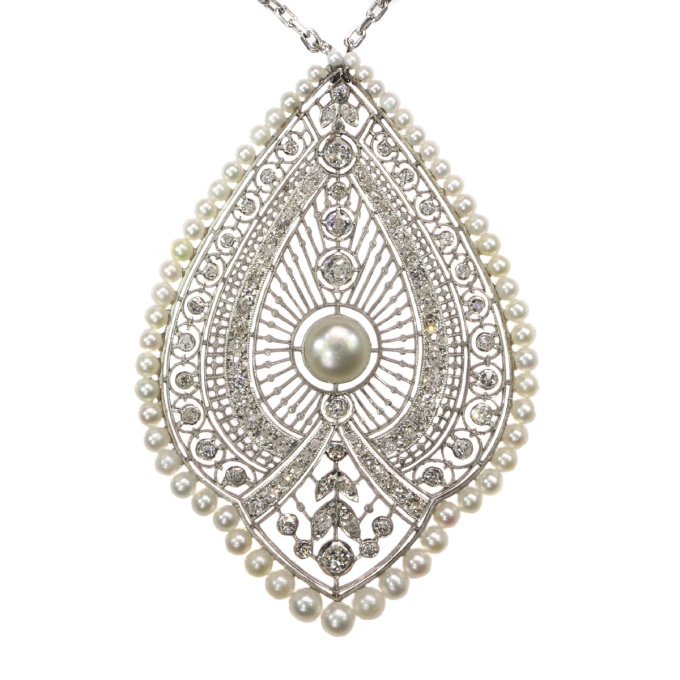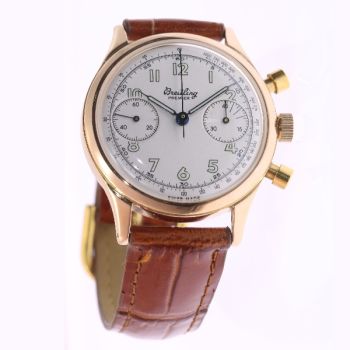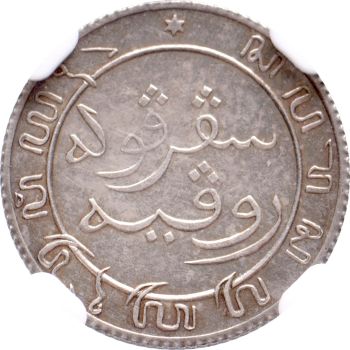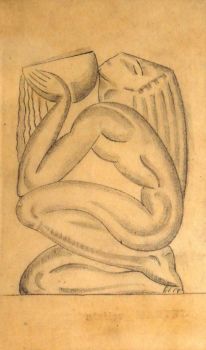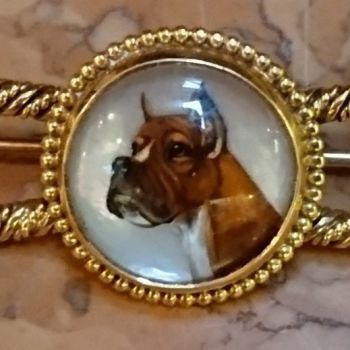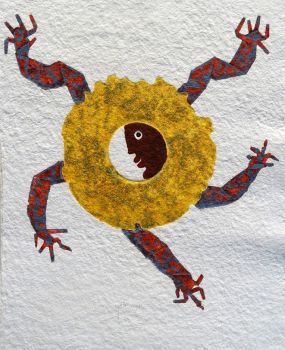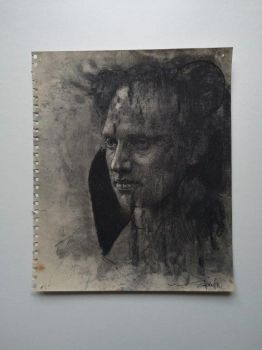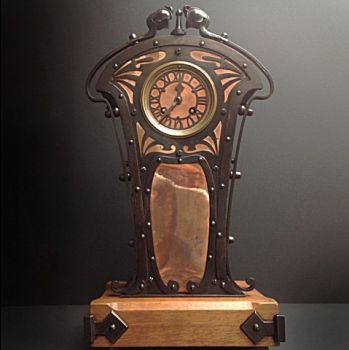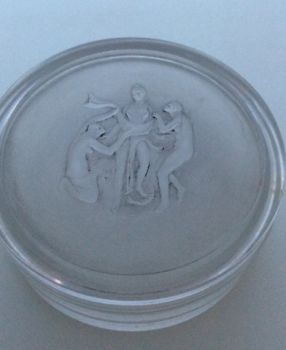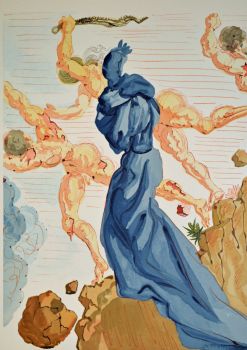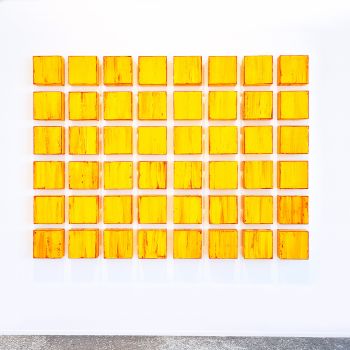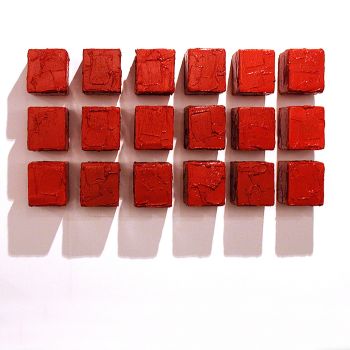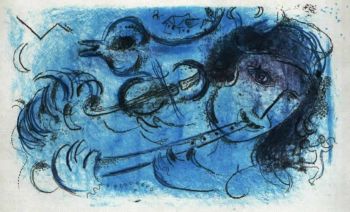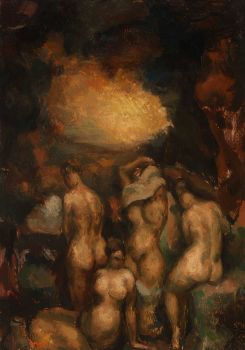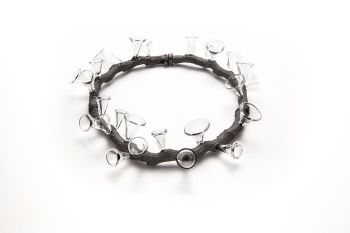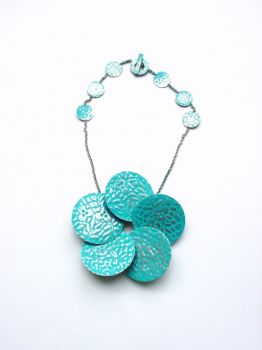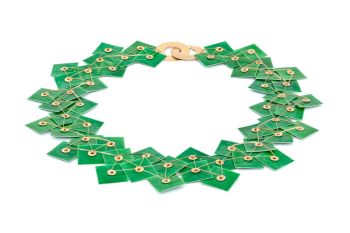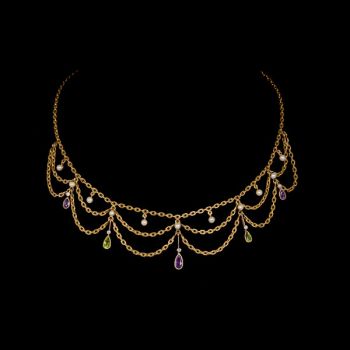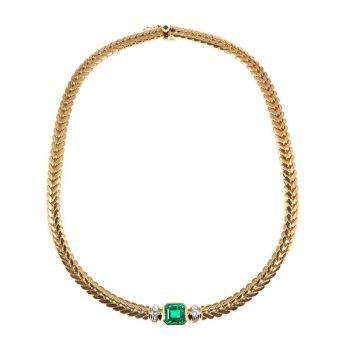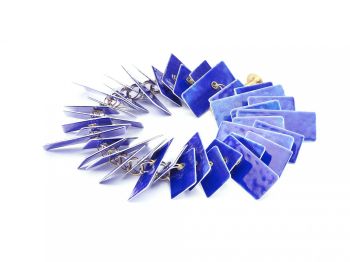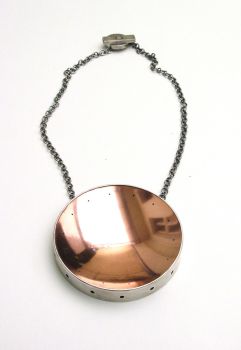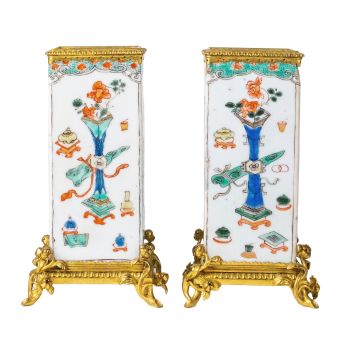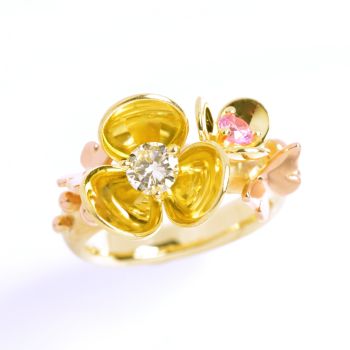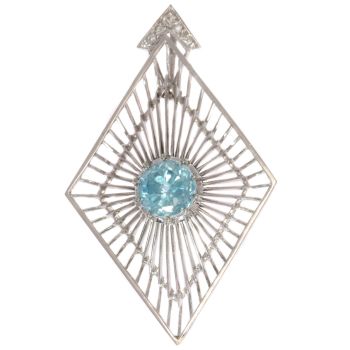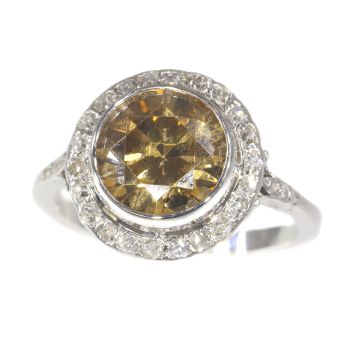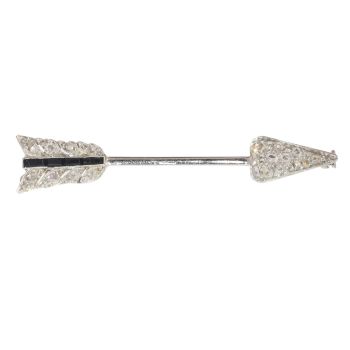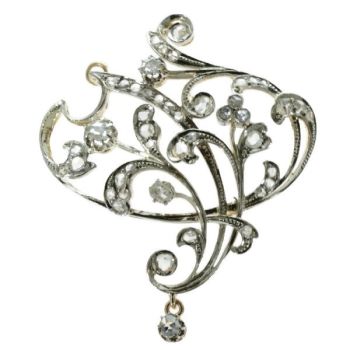Edwardian natural pearls Princess necklace possibly made by Soler Cabot 1910
Unknown artist
DiamondPearlGemstonePlatinum
Currently unavailable via Gallerease
- About the artwork
Everyone's astonishment at this princess necklace with a platinum peacock plume pendant out of typical Edwardian hand-sawn lace is indescribable. Its intricate craftsmanship radiates from the central natural orient pearl over alternating halos of 96brilliant and rose cut diamonds and platinum brocade to the delicate gleam of 59 degrading natural orient pearls. Vertically through the plume, there's a row of diamonds that opens up like a curtain and unveils a subtle scenery of diamond-encrusted leafs in the tip. The supremacy of this mesmerizing jewel lies even more in the refinement of the back, in the pierced closure set with 29 brilliant and rose cut diamonds and in the complementing 18K white gold cable chain. In every single element of thistimeless pendant is worthy of adoration until eternity.
Antique jewelry object group: necklace and pendant
Country of origin: France
Style: Edwardian
(more info on styles)
Style specifics: The fineness of line and lacey aspect of the piece are typical for the Edwardian period.
Period: ca. 1910
(events and facts in 1910)
Source of inspiration: Mother Nature
Theme: Peacock plumage - Peacocks were also associated with the ancient Greek goddess Hera and Hindu God Murugan and Krishna. In the Middle Ages, Christians sometimes used the peacock in art to symbolize the idea of immortality - this may have been because itwas believed that the flesh of a peacock did not decay after death. (from: Wikipedia)
Material: Pendant and closure are platinum and chain is 18K white gold (chain is of later date)
(more info on precious metals)
Extra information 01:Although we cannot say with certainty who is the maker of this piece, we have strong indications that it could be made by Soler Cabot. Soler Cabot is a well-known "Haute Joaillerie" house from Barcelona, Spain. Established in 1842 and still run by the family (at the time of writing this text -in 2019- already the 7th generation).
The Cabot dynasty began in Llavaneras, as jewellers who had been registered for several generations in the volumes of the Royal Academy of Silversmiths of the city of Mataró. The family's registrations date back to 1662, but earlier documents exist that place the origins of the dynasty around the year 1543.
The first jeweller's opens at Calle Argenteria no.35 in Barcelona, next to the cathedral of Santa Maria del Mar. Francesc Cabot i Ferrer starts creating religious objects and traditional period jewellery in Barcelona.
The indications we have to assign this to Soler Cabot is that we were saw some work of this house made in the very same strong design and execution as our piece here.
Extra information 02: The chain is of later date which is not uncommon with old pieces.
Diamonds:87 old mine brilliant cut diamonds (86 in pendant and one in closure) with a total estimated weight of approx. 3.00 crt.and 37 rose cut diamonds (nine in pendant and 28 in closure). We do not have the weight of the diamonds which is normal in our trade when it comes to rose cuts.
Note: All diamond weights, color grades and clarity are approximate since the stones were not removed from their mounts to preserve the integrity of the setting.
Precious stones:60 natural orient pearls
(more info on precious stones)
Birthstones: Diamond is the birthstone (or month stone) for April and pearl for June.
(more info on birthstones)
Hallmarks: The French control mark representing an rhinoceros' head that was in use in France from about 1847.
(more info on hallmarks)
Condition: excellent condition
(more info on our condition scale)
Dimensions: height pendant 6.40 cm (2.52 inch), length chain 42.00 cm (16.54 inch)
Weight: 23.40 gram (15.05 dwt)
Reference Nº: 10278-0001
Copyright photography: Adin, fine antique jewelry
See also our:
necklaces, pendants, Edwardian platinum jewelry, white gold jewelry, jewelry with diamond, jewelry with rose cut diamonds, jewelry with pearls, latest acquisitions,
antique jewelry, estate jewelry, vintage jewelry or modern jewelryJewelry with birthstones (or month stones) for:
January - February - March - April - May - June - July
August - September - October - November or December.
Additional information:
jewelry glossary - wall of fame - visit us in Antwerp - subscribe to our mailinglist.
What is antique jewelry? - What is estate jewelry? - What is vintage jewelry? - About the artist
It might happen that an artist or maker is unknown.
Some works are not to be determined by whom it is made or it is made by (a group of) craftsmen. Examples are statues from the Ancient Time, furniture, mirroirs, or signatures that are not clear or readible but as well some works are not signed at all.
As well you can find the following description:
•“Attributed to ….” In their opinion probably a work by the artist, at least in part
•“Studio of ….” or “Workshop of” In their opinion a work executed in the studio or workshop of the artist, possibly under his supervision
•“Circle of ….” In their opinion a work of the period of the artist showing his influence, closely associated with the artist but not necessarily his pupil
•“Style of ….” or “Follower of ….” In their opinion a work executed in the artist’s style but not necessarily by a pupil; may be contemporary or nearly contemporary
•“Manner of ….” In their opinion a work in the style of the artist but of a later date
•“After ….” In their opinion a copy (of any date) of a work of the artist
•“Signed…”, “Dated….” or “Inscribed” In their opinion the work has been signed/dated/inscribed by the artist. The addition of a question mark indicates an element of doubt
•"With signature ….”, “With date ….”, “With inscription….” or “Bears signature/date/inscription” in their opinion the signature/ date/ inscription has been added by someone other than the artist
Related artworks
- 1 - 4 / 12
Fontana
Flower basket brooch-pendant1900 - 1905
Price on requestAns Hemke-Kuilboer Juwelier & Antiquair
1 - 4 / 24- 1 - 4 / 24
- 1 - 4 / 24
- 1 - 4 / 24

